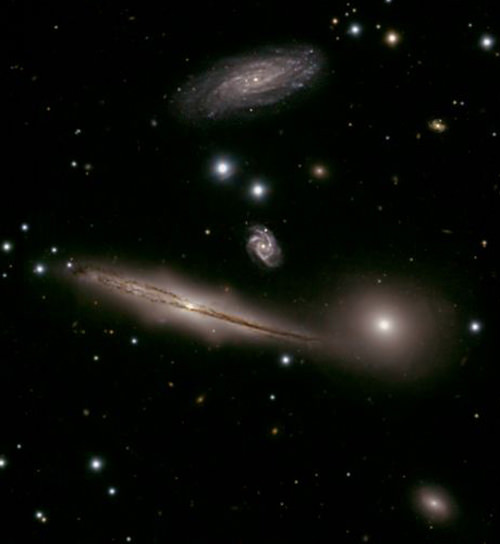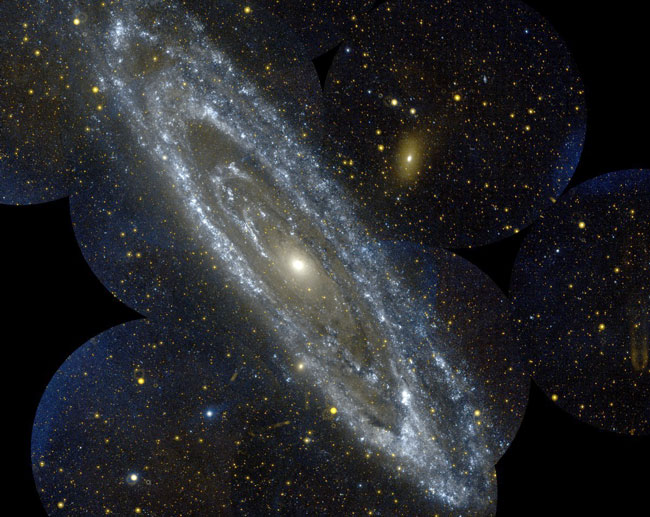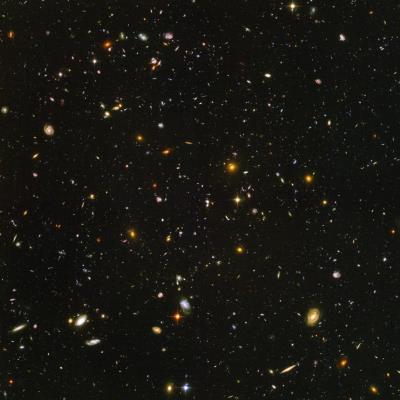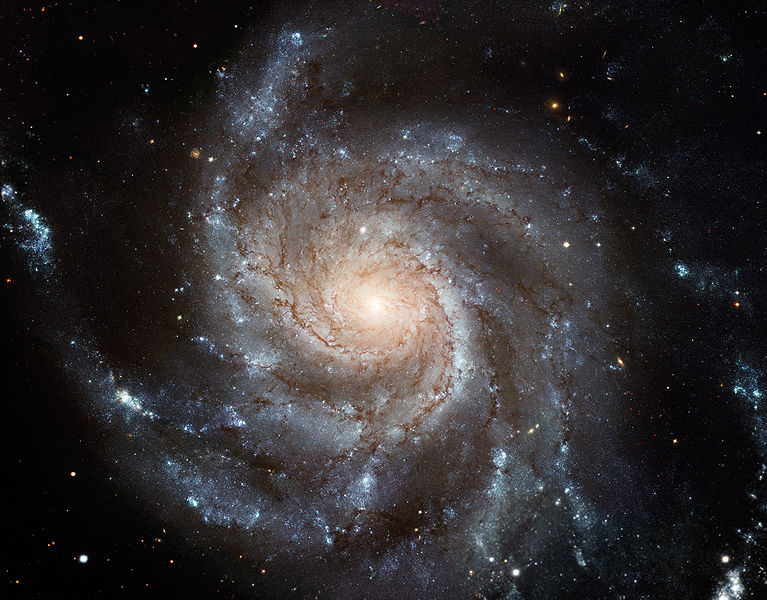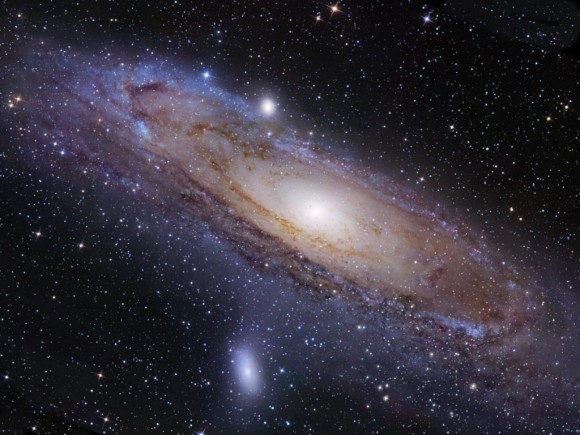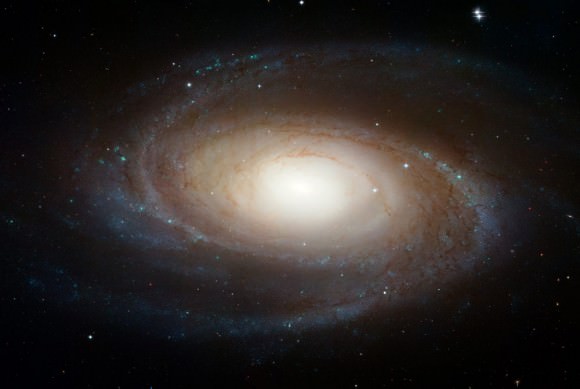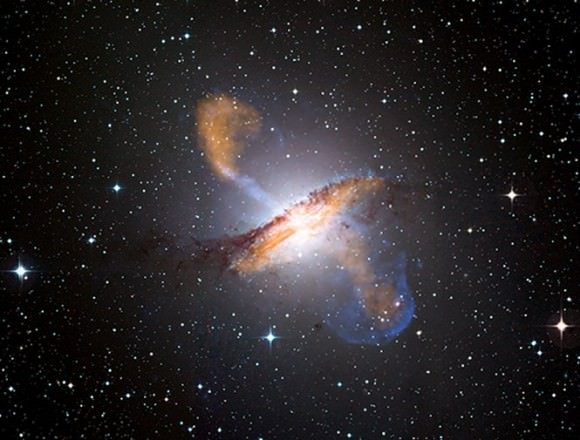[/caption]
Gravity is a funny thing, it really wants to keep everything together. The Moon orbits the Earth because of gravity, and the Earth travels around the Sun. The Sun is captured by the Milky Way’s gravity, and even the Milky Way is held together in a loose group of galaxies called the Local Group. And even the Local Group is part of the Virgo Supercluster.
Galaxy groups form the largest structures in the Universe. Our Local Group, for example, contains about 50 galaxies; most of which are smaller dwarf galaxies. The three large spiral galaxies in the Local Group are Andromeda, the Milky Way, and the Triangulum Galaxy. The rest are mostly satellite galaxies to these three large galaxies.
A typical galaxy group has around 50 galaxies, and contains a total mass of about 10 trillion times the mass of the Sun. Galaxy clusters are even larger, and can contain up to 1000 galaxies., with a mass of 100 trillion to 1000 trillion suns.
The largest structures in the Universe are the superclusters. These can contain hundreds of galaxy groups and clusters and measure hundreds of light-years across. We live in a relatively small example called the Virgo Supercluster, which contains at least 100 galaxy groups and clusters, and measures about 110 million light-years across. And the Virgo Supercluster is just one of millions of such supercluster galaxy groups in the Universe.
At the very largest scales in the Universe, the superclusters form long filaments that cross even larger voids in the Universe. The matter is held together in filaments that resemble a foam.
We have written many articles about galaxies for Universe Today. Here’s an article about a galaxy group smash up.
If you’d like more info on galaxies, check out Hubblesite’s News Releases on Galaxies, and here’s NASA’s Science Page on Galaxies.
We have also recorded an episode of Astronomy Cast about galaxies – Episode 97: Galaxies.

